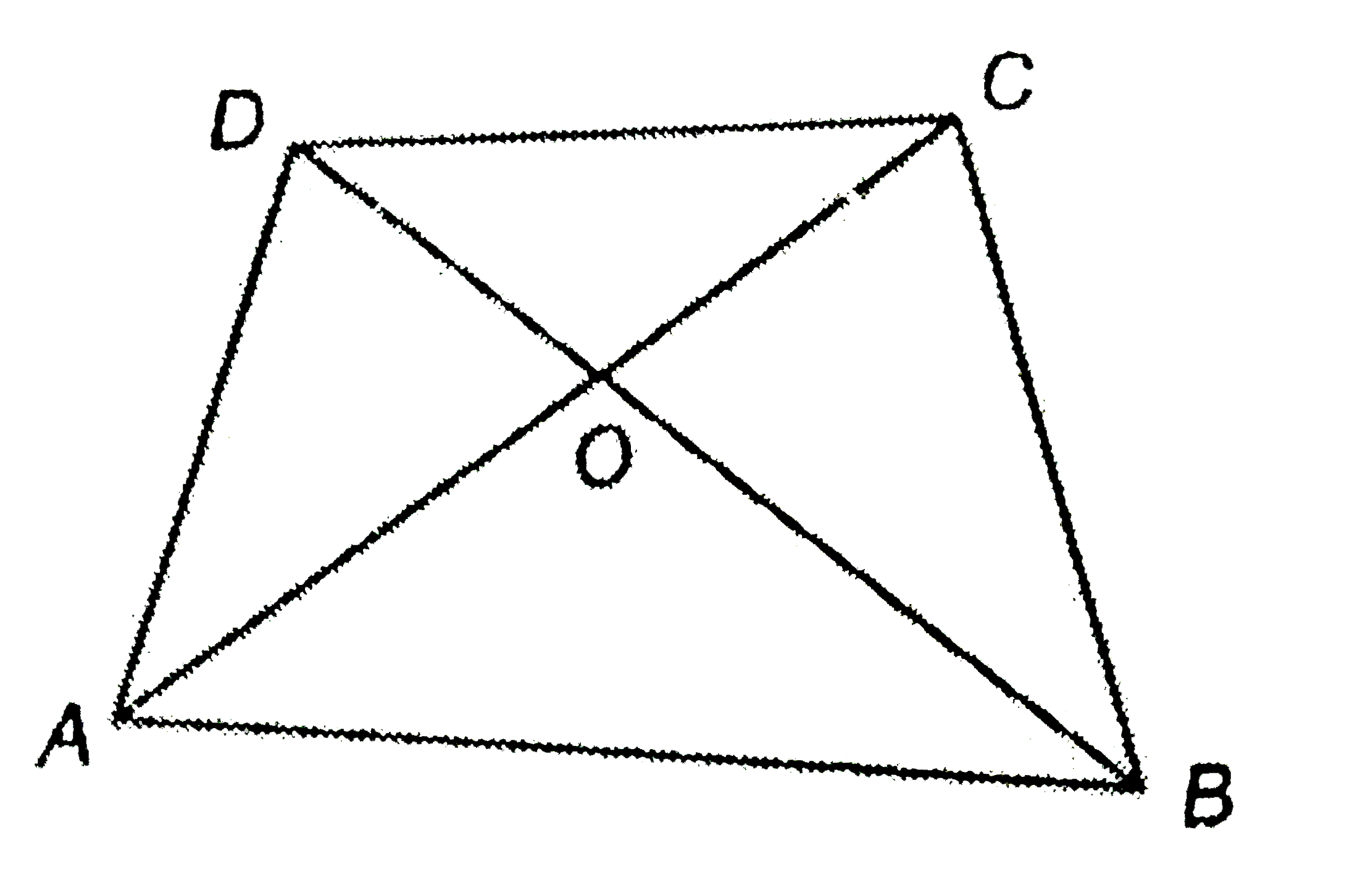ABCD is a quadrilateral. AM and CN are perpendiculars to BD, AM= CN and diagonals AC and BD intersect at O, then which one of the following is correct?
AO=OC
BO=OD
AO=BO
CO=DO
The correct Answer is:A
To solve the problem, we need to analyze the given quadrilateral ABCD and the conditions provided. Here’s a step-by-step solution:
Step 1: Understand the Given Information
We have a quadrilateral ABCD. Points M and N are the feet of the perpendiculars dropped from points A and C to the line BD, respectively. It is given that AM = CN and that the diagonals AC and BD intersect at point O.
Step 2: Identify the Triangles
We will focus on the triangles AMO and CNO. These triangles are formed by the points A, M, O and C, N, O respectively.
Step 3: Analyze the Triangles
1. Perpendiculars: Since AM and CN are both perpendicular to BD, we have:
- Angle AMO = 90°
- Angle CNO = 90°
2. Given Lengths: We know that AM = CN (given).
3. Vertically Opposite Angles: The angles AOM and CON are vertically opposite angles, which means:
- Angle AOM = Angle CON
Step 4: Apply the Criteria for Congruence
Now we can use the Angle-Angle-Side (AAS) criterion for triangle congruence:
- Triangle AMO and triangle CNO have:
- AM = CN (given)
- Angle AMO = Angle CNO = 90° (both are right angles)
- Angle AOM = Angle CON (vertically opposite angles)
Since we have two angles and the side between them equal, we can conclude that:
- Triangle AMO ≅ Triangle CNO (by AAS criterion).
Step 5: Conclusion
From the congruence of triangles AMO and CNO, we can deduce that:
- AO = OC (by Corresponding Parts of Congruent Triangles - CPCT).
Thus, the correct option is that AO = OC.
We have a quadrilateral ABCD. Points M and N are the feet of the perpendiculars dropped from points A and C to the line BD, respectively. It is given that AM = CN and that the diagonals AC and BD intersect at point O.
We will focus on the triangles AMO and CNO. These triangles are formed by the points A, M, O and C, N, O respectively.
1. Perpendiculars: Since AM and CN are both perpendicular to BD, we have:
- Angle AMO = 90°
- Angle CNO = 90°
- Angle AOM = Angle CON
Now we can use the Angle-Angle-Side (AAS) criterion for triangle congruence:
- Triangle AMO and triangle CNO have:
- AM = CN (given)
- Angle AMO = Angle CNO = 90° (both are right angles)
- Angle AOM = Angle CON (vertically opposite angles)
- Triangle AMO ≅ Triangle CNO (by AAS criterion).
From the congruence of triangles AMO and CNO, we can deduce that:
- AO = OC (by Corresponding Parts of Congruent Triangles - CPCT).
Topper's Solved these Questions
- BOOK - S CHAND IIT JEE FOUNDATIONCHAPTER - TRIANGLES EXERCISE - Self Assessment Sheet10videos
TRIANGLES
- BOOK - S CHAND IIT JEE FOUNDATIONCHAPTER - TRIANGLES EXERCISE - Self Assessment Sheet10videos
TRIANGLES
- BOOK - S CHAND IIT JEE FOUNDATIONCHAPTER - TIME AND WORK EXERCISE - Self Assessment Sheet - 2010videos
TIME AND WORK
- BOOK - S CHAND IIT JEE FOUNDATIONCHAPTER - TRIGONOMETRICAL RATIOS EXERCISE - Self Assessment Sheet - 401videos
TRIGONOMETRICAL RATIOS
Similar Questions
Knowledge Check
- Question 1 - Select One
ABCD is a quadrilateral whose diagonals are AC and BD. Which one of the following is correct?
A−−→BA+−−→CD=−−→AC+−−→DBB−−→BA+−−→CD=−−→BD+−−→CAC−−→BA+−−→CD=−−→AC+−−→BDD−−→BA+−−→CD=−−→BC+−−→AD - Question 2 - Select One
ABCD is a quadrilateral whose diagonals are AC and BD. Which one of the following is correct?
AA. −−→BA+−−→CD=−−→AC+−−→DBBB. −−→BA+−−→CD=−−→BD+−−→CACC. −−→BA+−−→CD=−−→AC+−−→BDDD. −−→BA+−−→CD=−−→BC+−−→AD - Question 3 - Select One
ABCD is a quadrlateral in which BD and AC are diagonals then
AAB+BC+CD+AD<AC+BDBAB+BC+CD+DA>AC+BDCAB+BC+CD+DA=AC+BDDAB+BC+CD+DA>2(AC+BD)
ABCD is a quadrilateral. Is AB+BC+CD+DA>AC+BD?
View SolutionABCD is a square. AC and BD intersect at O. State the measure of ∠AOB
View SolutionIn a quadrilateral ABCD, with unequal sides if the diagonals AC and BD intersect at right angles, then
View SolutionIn a quadrilateral ABCD, with unequal sides if the diagonals AC and BD intersect at right angles, then
View SolutionIn quadrilateral ABCD, BM and DN are drawn perpendicular to AC such that BM = DN. If BR = 8 cm, then BD is
 View Solution
View Solution


